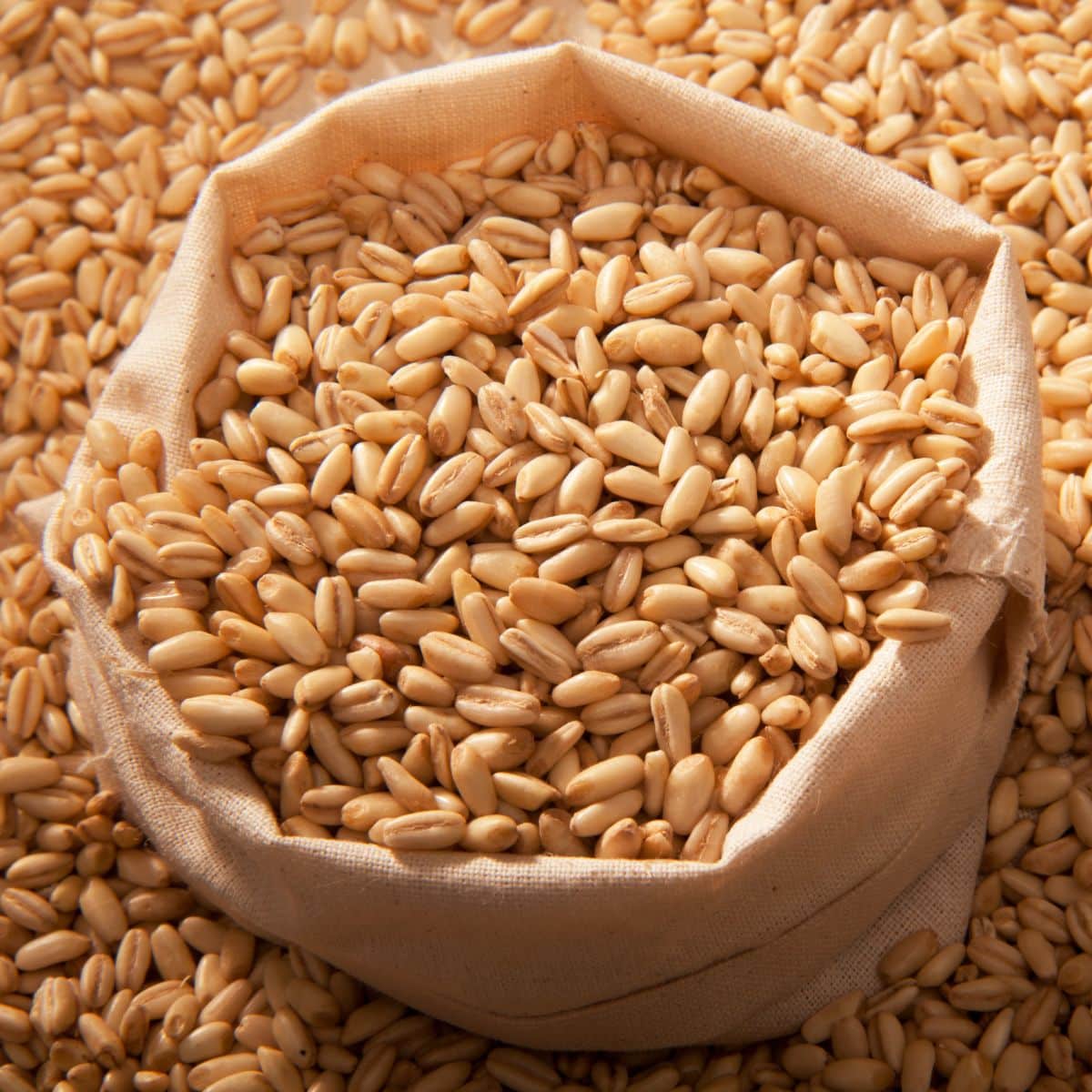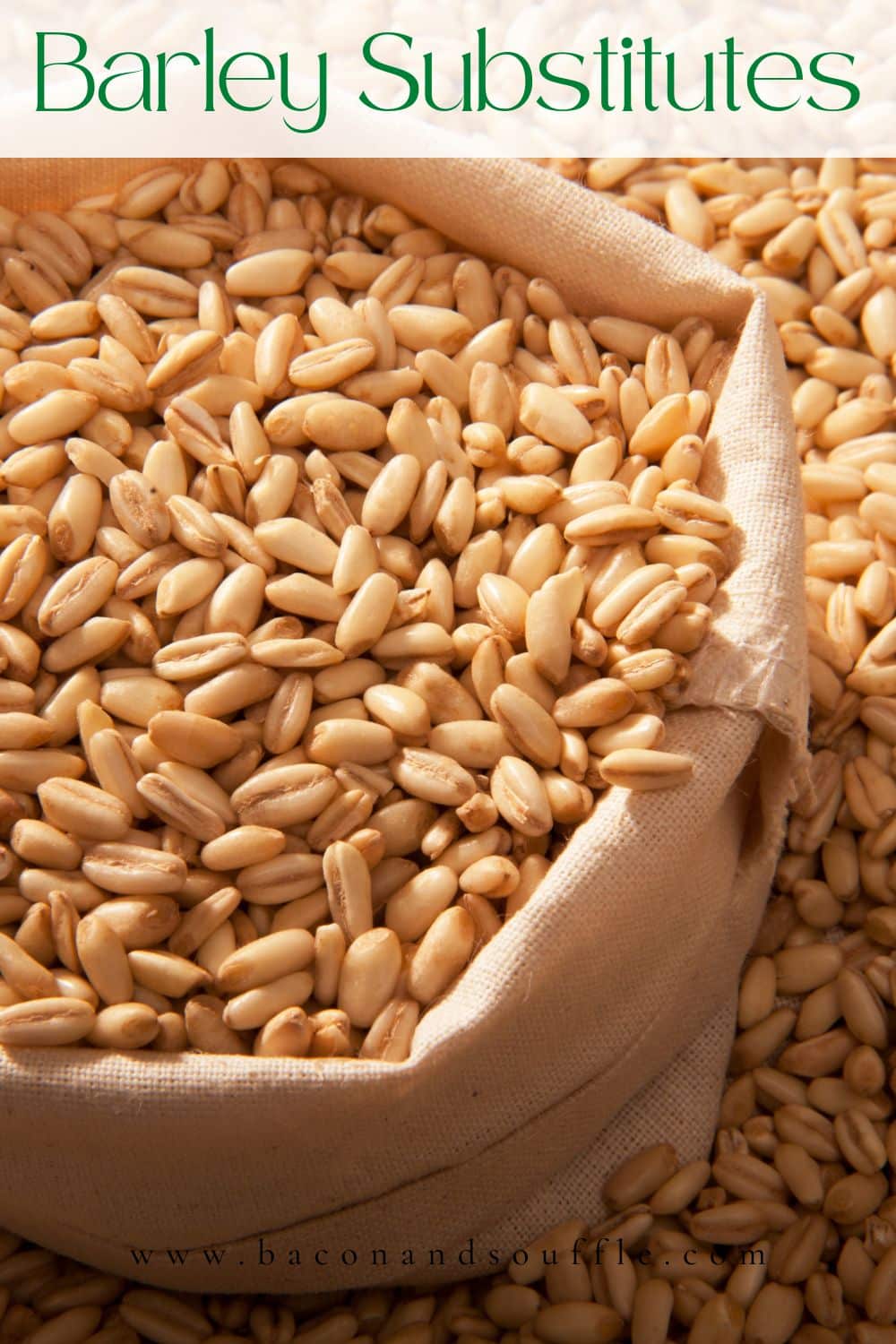What do you do when your recipe calls for barley but you don't have any around? Fear not! Check out this article to learn some of the best substitutes we could find.
We all know the benefits of barley. It's rich in fiber and can help reduce blood sugar levels, it's a key ingredient for stuffing, and it's great for making hearty winter soups.

Jump to:
What Is Barley?
Barley is a cereal grain that is most commonly used in soups, stews, and casseroles. It can also be ground into flour to make bread or pasta.
Barley is a good source of fiber and protein, and it contains vitamins and minerals such as selenium, phosphorus, potassium, and magnesium.
Health Benefits Of Barley?
There are many health benefits associated with barley. Barley has been shown to lower cholesterol levels, improve digestion, regulate blood sugar levels, and even help protect against cancer.
Additionally, barley is a good source of antioxidants and can help reduce inflammation throughout the body.
The Best Barley Substitutes
1. Quinoa
If you're looking for a great barley substitute for your recipes, look no further than quinoa. Quinoa is a delicious, nutritious grain that can be used in place of barley in most recipes.
It's also gluten-free, making it a great option for those with celiac disease or gluten intolerance. Quinoa is high in protein and fiber and has a nutty flavor that pairs well with other ingredients.
When cooking quinoa, be sure to rinse the grain thoroughly before cooking to remove any bitterness.
2. Buckwheat
Another great barley substitute is buckwheat. Buckwheat is a nutrient-rich grain that has a similar texture to barley when cooked. It's also gluten-free, making it a great option for those with celiac disease or gluten intolerance.
It has a low glycemic index, making it a great choice for those with type 2 diabetes and high blood pressure. Buckwheat is packed with multiple nutrients which include proteins, manganese, Fiber, Magnesium, and Copper.
Buckwheat has a strong flavor, it might take some time for you to get used to it, it has a nutty and toasty flavor to it. On the other hand, some people find barley's flavor too bland and might find its flavor delectable.
3. Lentils
If you're looking for a barley substitute that's high in fiber, try using lentils in your recipes. Lentils are a good source of both soluble and insoluble fiber, making them a healthy choice for those looking to add more fiber to their diet.
4. Oatmeal
If you're looking for a healthy and delicious barley substitute for your recipes, look no further than oatmeal! Oatmeal is packed with nutrients and fiber, making it a great choice for those looking to improve their health.
It's also quick and easy to prepare, making it perfect for busy weeknights. Simply cook the oatmeal according to package directions and add it to your favorite recipes in place of barley. You'll love the results!
5. Rice
Another great option that makes a good barley substitute is rice.
Rice is a staple in many cultures and is used in a variety of dishes. It is a versatile grain that can be cooked in many different ways, such as boiled, steamed, or Fried.
Rice is also Gluten-Free, making it a good option for those with gluten sensitivities or celiac disease. Additionally, rice is a good source of complex carbohydrates and fiber.
When substituting rice for barley, you will want to use a similar cooking method. For example, if you are making a soup or stew that calls for boiled barley, simply boiling the rice in water or broth until tender will work well.
If you are making a dish that calls for fried barley, cooking the rice in oil until golden brown will give you similar results.
When substituting rice for barley in salads or other cold dishes, cook the rice according to package directions then allow it to cool completely before adding it to the other ingredients.
6. Vegetable Puree - Peas, Carrots, Potatoes, Zucchini
If you're looking for a healthy and delicious alternative to barley in your recipes, look no further than vegetable purees! Peas, carrots, potatoes, and zucchini are all great options that can add plenty of flavor and nutrition to your dishes.
Here are some tips for using vegetable purees in your recipes:
- Add them to soups and stews for extra body and thickness.
- Use them as a base for sauces and gravies.
- Stir them into oatmeal or other hot cereals for a nutrient-packed breakfast.
- Mix them with ground meat when making burgers or meatloaf.
- Spread them on toast or crackers for a quick and easy snack.
7. Farro
Finally, if you're looking for a barley substitute that has a similar flavor to barley, try using farro in your recipes. Farro is an ancient grain that has a nutty flavor and chewy texture. It's also a good source of fiber and protein, making it a nutritious choice for those looking to add more whole grains to their diet.
8. Brown Rice
Brown rice makes a healthier and more nutritional substitute for barley than white rice.
Its nutrient content is similar to that of white rice, but it has higher amounts of fiber and vitamins. Brown rice is a whole grain and contains all three parts of the grain: the bran, the germ, and the endosperm.
White rice has had the bran and germ removed, leaving only the endosperm. This makes it lower in fiber and other nutrients. Brown rice takes longer to cook than white rice, but it has a nuttier flavor and a chewy texture and contains a sufficient amount of carbohydrates and calories.
Since it has a low glycemic index, it doesn't make one feel bloated and heavy like white rice does. It is also a good source of magnesium, which is known to relax the nervous system and improve sleep quality. Brown rice is considered to be more filling than white rice because of its fiber content.
8. Millet
Millet is a small, round grain that is popular in Africa and Asia. It has a nutty flavor and is often used in pilafs, bread, and cereals. Millet is a good source of vitamins and minerals, including magnesium, phosphorus, and iron.
It makes a great substitute for those who can't stand the flavor of barley, because, unlike barley, its flavor isn't chewy, but rather similar to the texture of mashed potatoes.
These tiny corn kernels which almost look like seeds are gluten-free and full of proteins, and minerals and rich in iron.
However, one thing to be kept in mind is that millet tends to expand when cooked. For instance, if you want to cook one cup of millet, only fill your pot with ¼ of raw millet.
Interestingly millet doesn't only look like corn kernels, it also tastes like corn, which brings a nice flavor to your dishes.
9. Sorghum
Sorghum is a great substitute for barley in recipes. It has a similar flavor and texture, making it a good choice for dishes like soups and stews. Sorghum is also high in fiber and nutrients, making it a healthy option for those looking to add more whole grains to their diet.
With the ever-increasing demand for healthy and gluten-free recipes, Sorghum has been picked up by many nutritionists and health professionals as a gluten-free alternative to normal flour and baking recipes.
Sorghum can also be used as an alternative for grains such as quinoa and buckwheat. It can be cooked as you would cook your rice. It adds an interesting flavor, consistency, and lots of nutritional value. A must-have grain for fitness freaks.
10. Amaranth
Amaranth is a grain that can be used in place of barley. It has a similar flavor and texture, making it a good choice for recipes like soups and stews. Amaranth is also high in fiber and nutrients, making it a healthy option for those looking to add more whole grains to their diet.
Amaranth can be found in most health food stores, as well as some regular supermarkets.
Amaranth can also be used as an alternative for grains such as quinoa and buckwheat.
How To Choose A Barley Substitute
When it comes to finding a barley substitute for your recipes, there are a few things you'll want to keep in mind. First, what is the recipe calling for the barley to do? If it's simply there for flavor or texture, then any number of other grains can likely be used in its place. However, if the recipe is relying on the barley to provide some structure or thickening power, then you'll want to find a similar grain that will offer a similar result
The Best Substitute
There are a few things to consider when choosing a barley substitute for your recipes.
The first is what kind of dish you are making. If it is a soup or stew, you will want to choose a grain that has a similar texture to barley so it will absorb the flavors of the broth. Some good choices for this include farro, wheat berries, and pearl couscous. If you are making a salad or side dish, you can choose any grain that you like. Some good options include quinoa, rice, and millet.
The Cooking Time
The second thing to consider is the cooking time. Barley takes longer to cook than most grains, so you will want to choose a grain that has a similar cooking time. Farro and wheat berries both have long cooking times, so they are good choices for soups and stews. Pearl couscous has a shorter cooking time, so it is better for salads and side dishes.
The Flavor
The third thing to consider is the flavor. Barley has a nutty flavor that some people love and some people find bland. If you are in the latter group, you may want to choose a different grain altogether. However, if you do like the flavor of barley, there are some grains that have similar flavors. Wheat berries and farro both have nutty flavors, while pearl couscous has a more neutral flavor.
The Gluten-Free Options
One of the major reasons to look for barley substitutes is that people want to eat healthily and invest in more gluten-free options. Some of these gluten-free options include,
1. Quinoa: It is a popular grain that is gluten-free and has a nutty flavor. It is also high in protein and fiber.
2. Rice: There are many different types of rice, but all of them are gluten-free. You can choose the type of rice based on the dish you are making.
3. Millet: This grain is not as well-known as quinoa or rice, but it is gluten-free and has a nutty flavor.
4. Sorghum: This grain is gluten-free and has a sweet flavor. It is often used in baking because of its sweetness.






Comments
No Comments